Research on the Fixation Strength of High-Temperature Geothermal Drilling Cone Bit Teeth
Abstract
1. Introduction
2. Materials and Equipment
3. Testing Process
4. Experimental Result and Numerical Simulation
4.1. Curve Analysis of Tooth Ballast Process
4.2. The Influence of Perforation Distance on Fastening Force
4.3. Effect of Tooth Diameter on Fastening Force
4.4. The Effect of Interference on the Fastening Force
5. Conclusions and Discuss
5.1. Conclusions
- (1)
- The higher the temperature, the weaker the strength of the fixed teeth. At the same tooth spacing, the maximum fastening force decreases continuously with increasing temperature, and compared to room temperature, the maximum fastening force decreases by about 49.6–64.5%. This indicates that high temperatures significantly weaken the tooth fixation strength of the roller drill bit.
- (2)
- At the same temperature, the maximum fastening force is highest when the tooth spacing is 10 mm, with maximum values of 2080.8 kg (room temperature), 1652.1 kg (120 °C), 1284 kg (180 °C), and 856.9 kg (240 °C), respectively. When the interference fit is 0.115 mm and the tooth spacing is 10 mm, the best tooth-fixing effect is achieved.
- (3)
- When the tooth diameter is 16 mm, the maximum fastening force is the highest, with a maximum value of 1392.8 kg. As the temperature increases, the maximum fastening force increases with the increase in tooth diameter. When the interference fit is 0.115 mm, choosing a tooth diameter of 16 mm is more conducive to improving the strength of the fixed teeth.
- (4)
- At the same temperature, as the interference fit increases, the maximum fixed-tooth force first increases and then decreases, and the maximum fixed-tooth force is highest when the interference fit is 0.095 mm. At 120 °C, 180 °C, and 240 °C, the maximum fastening force decreased by 21.9%, 29.4%, and 56.6%, respectively, compared to room temperature.
5.2. Discuss
- (1)
- The impact of high temperature on material properties. Under high-temperature conditions, the mechanical properties of the matrix material (20CrMo) and tooth material (YG16C) of the roller drill bit significantly decrease. The strength limit and hardness of the material decrease, and the difference in thermal expansion coefficient leads to a reduction in interference fit, thereby weakening the fastening force between the teeth and the tooth hole.
- (2)
- Optimization of tooth spacing. The experimental results show that the fixed-tooth strength is the highest when the tooth spacing is 10 mm. This may be because appropriate tooth spacing can better balance the stress on teeth and the thermal expansion of materials. Too small a tooth spacing can lead to stress concentration, while too large a tooth spacing can reduce the support effect of the teeth. This discovery provides an important reference for the design of roller drill bits.
- (3)
- Selection of tooth diameter. In high-temperature environments, larger tooth diameters (such as 16 mm) can provide stronger resistance to thermal expansion and structural stability. Therefore, when drilling high-temperature geothermal wells, it is recommended to prioritize selecting teeth with larger diameters to improve the strength of the fixed teeth.
- (4)
- Optimization of interference fit. The experimental results show that the fixed-tooth strength is the highest when the interference fit is 0.095 mm. The optimization of interference fit is crucial for improving the strength of fixed teeth. Excessive interference fit may lead to material fatigue and stress concentration, and instead reduce the strength of fixed teeth.
Author Contributions
Funding
Data Availability Statement
Conflicts of Interest
References
- Yang, Y.X.; Song, D.D.; Ren, H.T.; Huang, K.; Zuo, L. Study of a new impregnated diamond bit for drilling in complex, highly abrasive formation. J. Pet. Sci. Eng. 2019, 187, 106831. [Google Scholar] [CrossRef]
- Xu, G.; Xiao, F.J.; Cui, X.M.; Yu, D.K.; He, C.; Ye, X.T. Arsenic and fluorine concentrations and sources of Yangbajing high temperature geothermal water in Xizang. Rock Miner. Test. 2024, 43, 487–500. [Google Scholar]
- Shulyupin, A.N. Steamwater flow instability in geothermal wells. Thermo-Phys. Aeromechanics 2015, 22, 475–480. [Google Scholar] [CrossRef]
- Simisinov, D.I.; Gorodilov, L.V.; Simisinov, A.D. Parameters of dimension chains of roller cone drill bits. J. Min. Sci. 2024, 60, 629–638. [Google Scholar] [CrossRef]
- Sporin, G.V.Z. The characterization of wear in roller cone drill bit by rock material-Sandstone. J. Pet. Sci. Eng. 2019, 173, 1355–1367. [Google Scholar] [CrossRef]
- Li, Q.; Li, Q.; Cao, H.; Wu, J.; Wang, F.; Wang, Y. The crack propagation behaviour of CO2 fracturing fluid in unconventional low permeability reservoirs: Factor analysis and mechanism revelation. Processes 2025, 13, 159. [Google Scholar] [CrossRef]
- Cheng, Y. Wellhead stability during development process of hydrate reservoir in the Northern South China Sea: Evolution and mechanism. Processes 2024, 13, 40. [Google Scholar] [CrossRef]
- Saksala, T.; Gomon, D.; Hokka, M.; Kuokkala, V.-T. Numerical and experimental study of percussive drilling with a triple-button bit on Kuru granite. Int. J. Impact Eng. 2014, 72, 56–66. [Google Scholar] [CrossRef]
- Iman, R.; Babak, A.; Brian, E. Analysis of rock cutting process with a blunt PDC cutter under different wear flat inclination angles. J. Pet. Sci. Eng. 2018, 171, 771–783. [Google Scholar]
- Song, D.D.; Ren, Z.P.; Yang, Y.X.; Chen, Y.; Nie, G.; Tan, L.; Peng, H.; Li, Z.; Chen, X.; Li, M.; et al. Drilling performance analysis of impregnated micro bit. Mech. Sci. 2022, 13, 867–875. [Google Scholar] [CrossRef]
- Ji, W.S.; Cao, Z.; Zhong, L.; Wu, X.; Leng, X. Failure analysis of roller bearings in KX732-250 mining roller drill bit. Min. Equip. 2024, 150–155. [Google Scholar]
- Li, F.F.; Jiang, X.; Zhang, Y. Application of force analysis in failure analysis of roller drill bits. J. Liaoning Univ. Sci. Technol. 2024, 26, 32–34+60. [Google Scholar]
- Li, F.F.; Liu, B.; Shi, Z.W.; Zhang, Y. Failure analysis of KX84 series roller bit claw large runway. Fail. Anal. Prev. 2023, 18, 55–61. [Google Scholar]
- Bill, R.; Abraham, S.; Paul, S. Sccessfully applying micronized cellulose to minimize lost circulation on the PUNA geothermal venture wells. Geothermal Resource Council. In Proceedings of the 34th Annual Meeting, Reno, NV, USA, 19–22 April 2010; pp. 1–15. [Google Scholar]
- Majd, H.M.; Hassani, B. Improvement of roller cone drill bit design by using finite element method and experimental study. Int. J. Oil Gas Coal Technol. 2022, 31, 382–405. [Google Scholar] [CrossRef]
- Yan, B.Y. Research on the mechanism and improvement technology of drill bit wear. West. Explor. Eng. 2023, 35, 58–60. [Google Scholar]
- Ren, H.T.; Tian, H.P.; Yu, H.B.; Zhou, C.; Yang, Y.; Liu, Q.; Song, D.; Chen, L.; Chen, X. Development and application of three cone drill bit for high temperature geothermal wells. Nat. Gas Ind. 2021, 41, 95–100. [Google Scholar]
- Ravina, K.; Yang, N.; Brocoum, S.; Pasco-Anderson, J.; Walker, R.L.; Khan, M.; Cabodi, M.; Holsapple, J. Conical drill bit for optimized external ventricular drain placement: A proof-of-concept study. J. Neurosurg. 2023, 139, 881–891. [Google Scholar] [CrossRef]
- Hu, H.; Qi, L.; Chao, X. Physics-informed Neural Networks (PINN) for computational solid mechanics: Numerical frameworks and applications. Thin-Walled Struct. 2024, 205, 112495. [Google Scholar] [CrossRef]
- Yu, H.; Wang, H.; Lian, Z. An assessment of seal ability of tubing threaded connections: A hybrid empirical-numerical method. J. Energy Resour. Technol. 2023, 145, 052902. [Google Scholar] [CrossRef]
- Smolyanitsky, B.N.; Popelyukh, A.I.; Karpov, V.N.; Alekseev, S.E.; Timonin, V.V. Downhole high-pressure air hammers for open pit mining. J. Min. Sci. 2014, 50, 929–993. [Google Scholar]
- Shephard, M.S.; Yehlan, A. Computational strategies for nonlinear and fracturemechanics problem. Comput. Struct. 1985, 20, 211–223. [Google Scholar] [CrossRef]
- Huang, K.L.; Ai, Z.J.; Yang, Y.X. The improved rock breaking efficiency of an annular-groove PDC bit. J. Pet. Sci. Eng. 2018, 172, 425–435. [Google Scholar] [CrossRef]
- Kuang, Y.C.; He, P.; He, J.B.; Wei, Q.; Zhou, S.W.; Dong, Z.Z. Research on sealing test technology of roller Drill bit and performance evaluation of sealing ring. J. Eng. Des. 2024, 31, 383–392. [Google Scholar]
- Wang, Y.J.; Nie, D.J.; Yuan, B.H.; Zhao, C.L.; Zhang, T.; Liu, Z.X. Research and application of PDC drill bits for high-temperature hard rock geothermal drilling in Tianyang Basin. Drill. Eng. 2024, 51, 125–131. [Google Scholar]
- Schmitz, T.; Powell, K. Shrink fit tool holder connection stiffness/damping modeling for frequency response prediction in milling. Int. J. Mach. Tools Manuf. 2007, 47, 1368–1380. [Google Scholar] [CrossRef]
- Pryhorovska, T.A.; Chaplinskiy, S.S. Finite element modeling of rock mass cutting by cutters for PDC drill bits. Oil Ind. J. 2015, 42, 38–41. [Google Scholar] [CrossRef]
- Simone, O.; Enel, I.; Regillion, K. New HT/HP Technology for geothermal application significantly increases on-bottom drilling hours. In Proceedings of the IADC/SPE Drilling Conference and Exhibition, San Diego, CA, USA, 6–8 March 2012; pp. 1–20. [Google Scholar]
- Burkhart, D.I.C.; Schollmayer, D.I.T.; Vorst, B.V.D.; Sansalone, M.; Thielen, S.; Sauer, B. Development of an online-wear-measurement for elastomer materials in a tribologically equivalent system for radial shaft seals. Wear 2021, 476, 203671. [Google Scholar] [CrossRef]
- Wang, H.X. Strait development and application of deep sea shallow jet three cone drill bit. Chin. Pet. Chem. Stand. Qual. 2024, 44, 115–117. [Google Scholar]
- Slipchuk, A.M.; Jakym, R.S.; Korendiy, V.M.; Lytvyniak, Y.M. Design and technological aspects of functionally oriented technology of manufacturing the three-cone drill bits. IOP Conf. Ser. Mater. Sci. Eng. 2023, 1277, 012015. [Google Scholar] [CrossRef]
- ISO 6892-1:2019; Tensile testing of metallic materials—Part 1: Room temperature test method. International Organization for Standardization: Geneva, Switzerland, 2019.
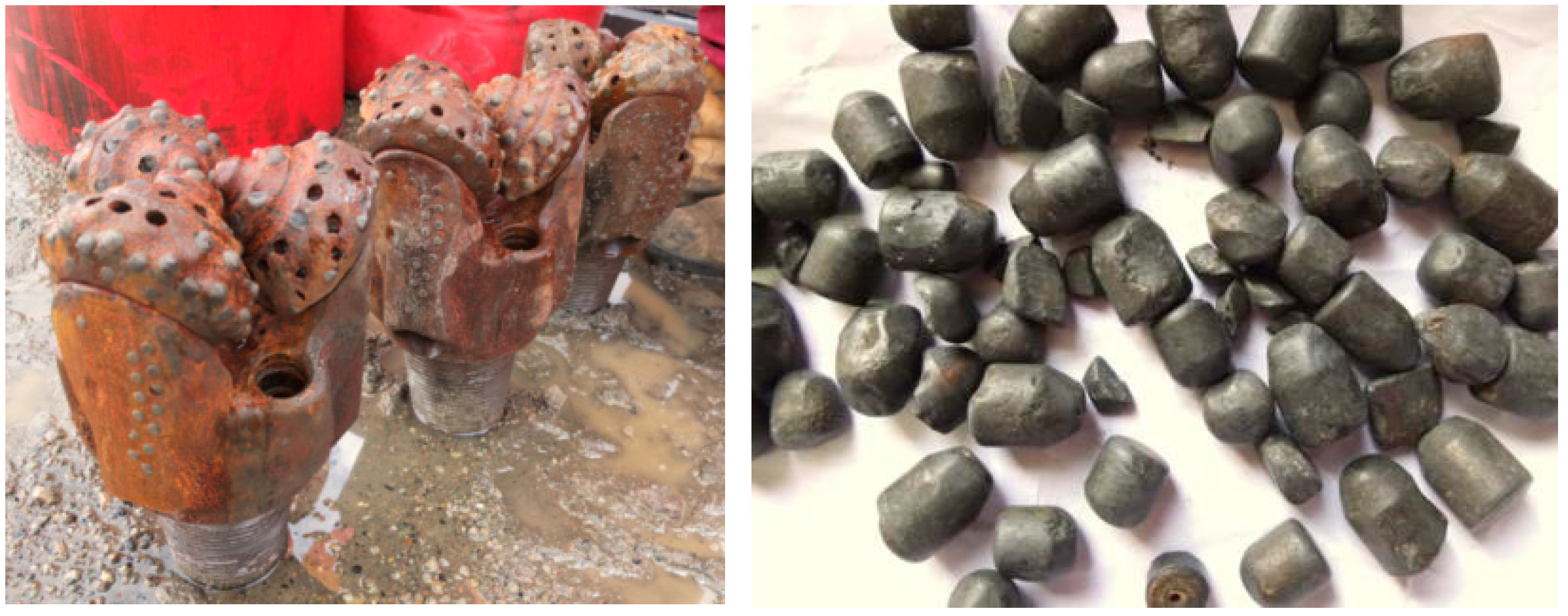
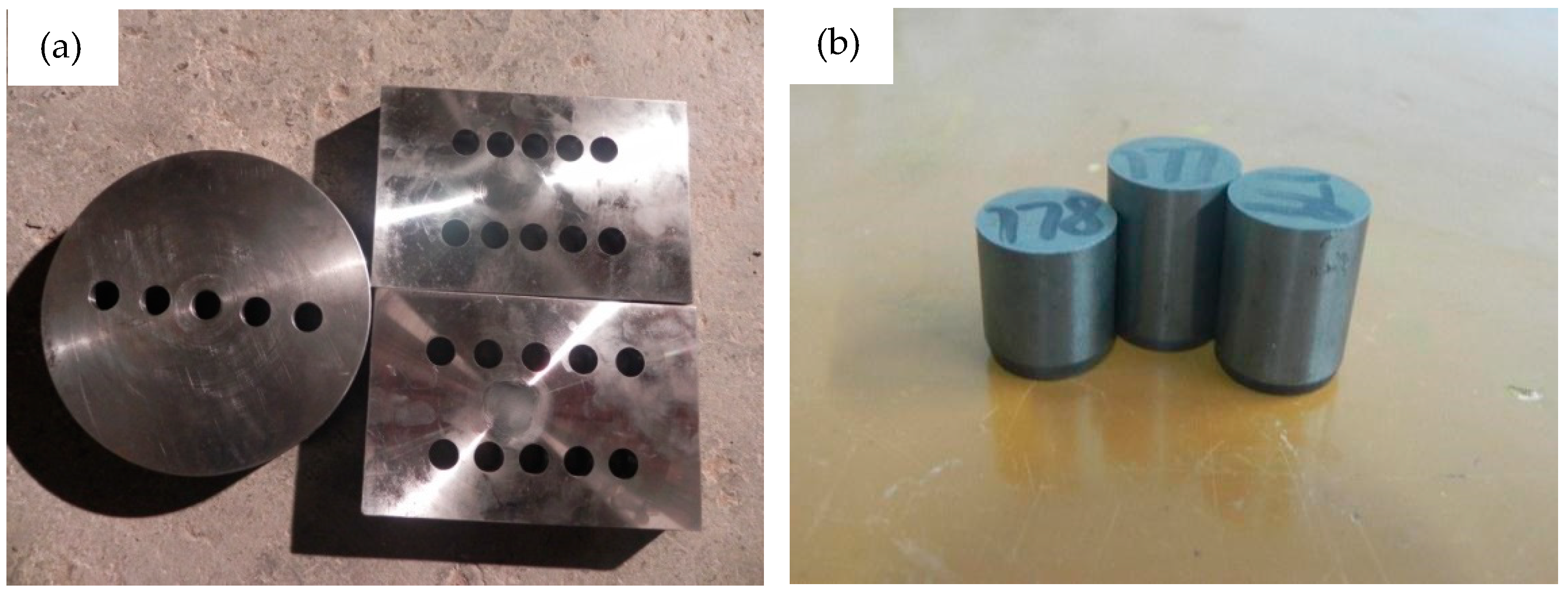
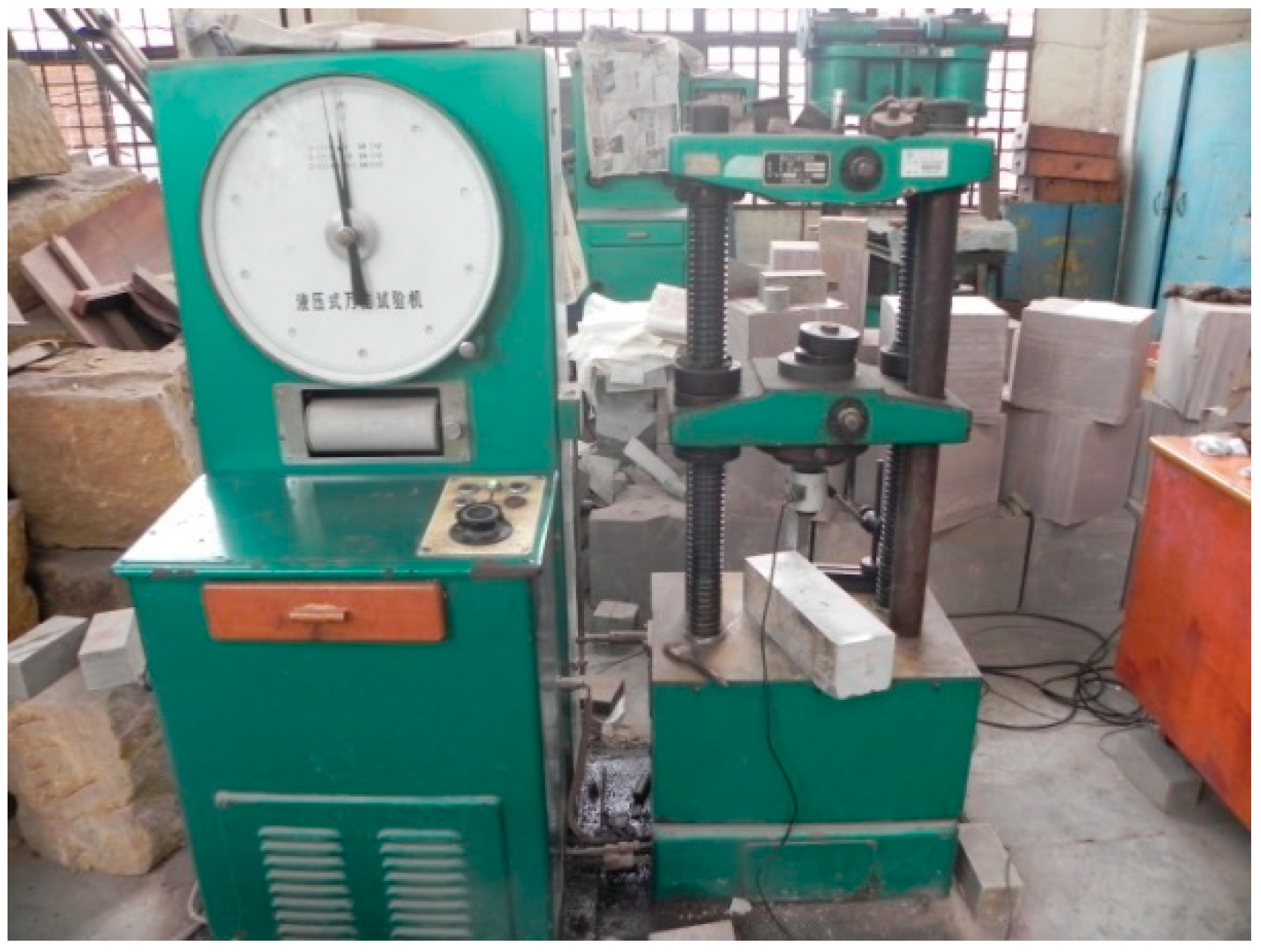

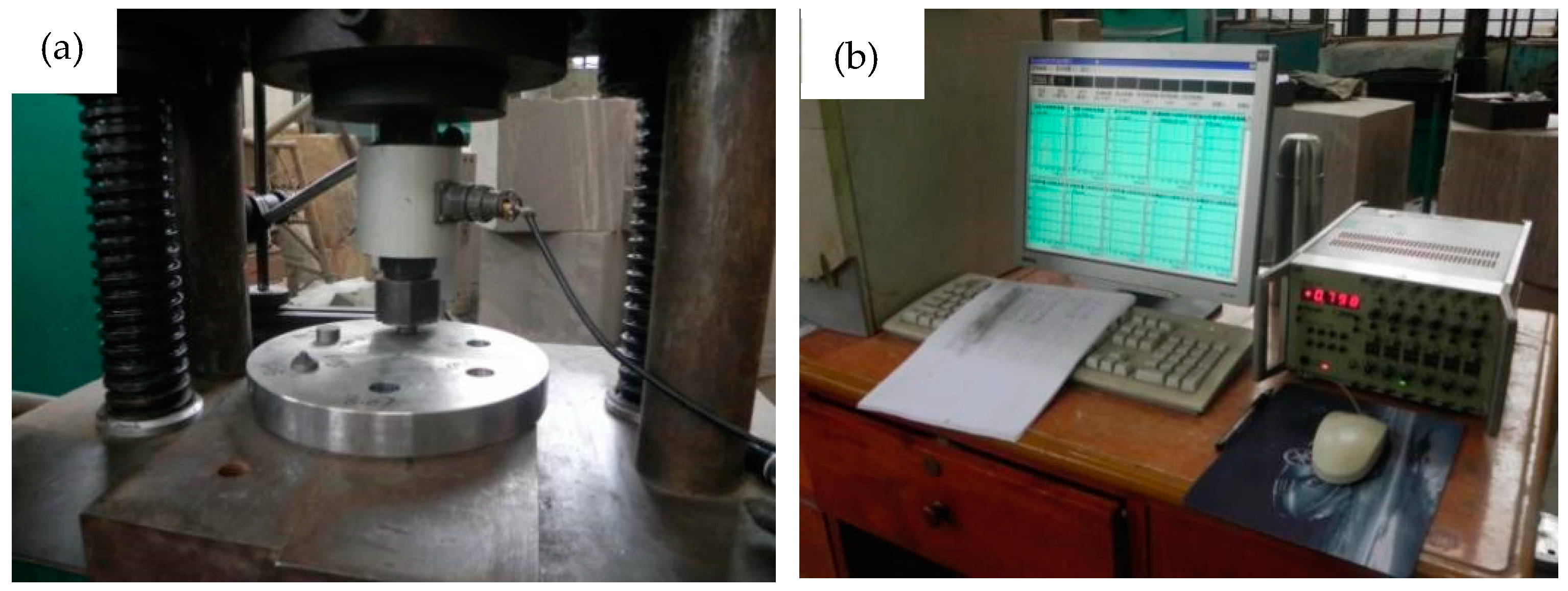
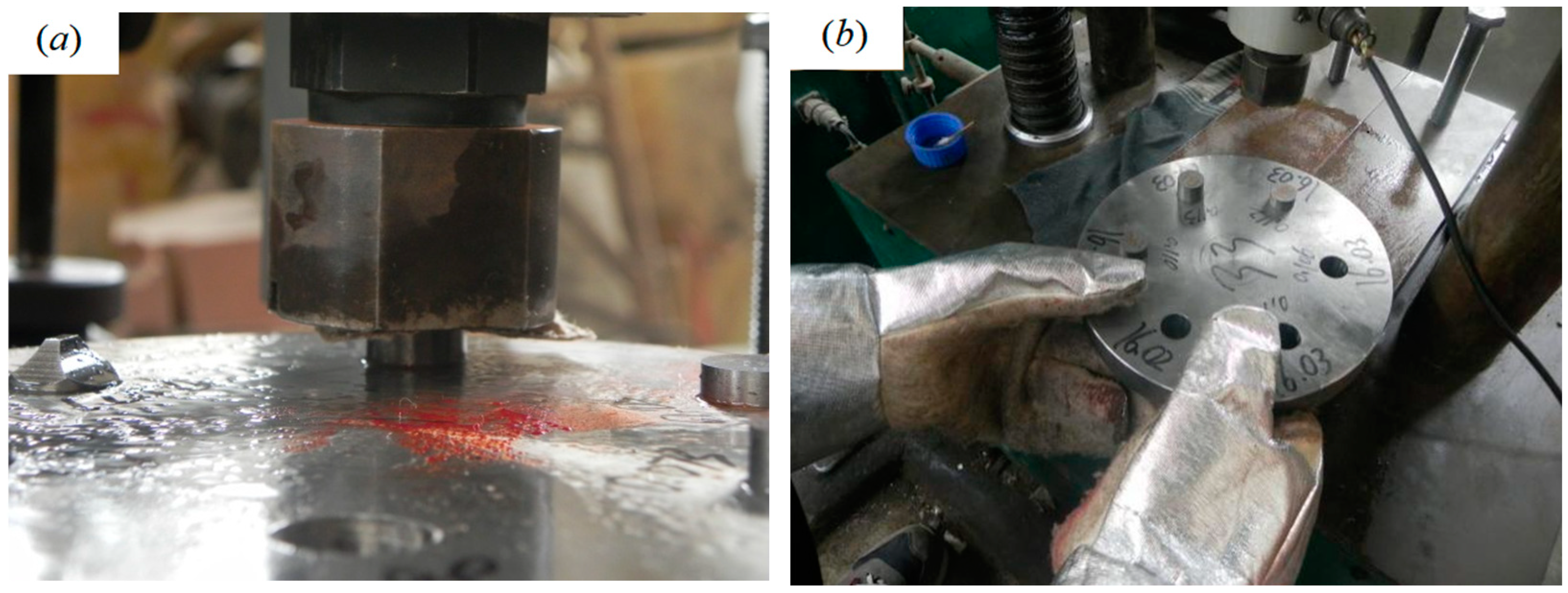
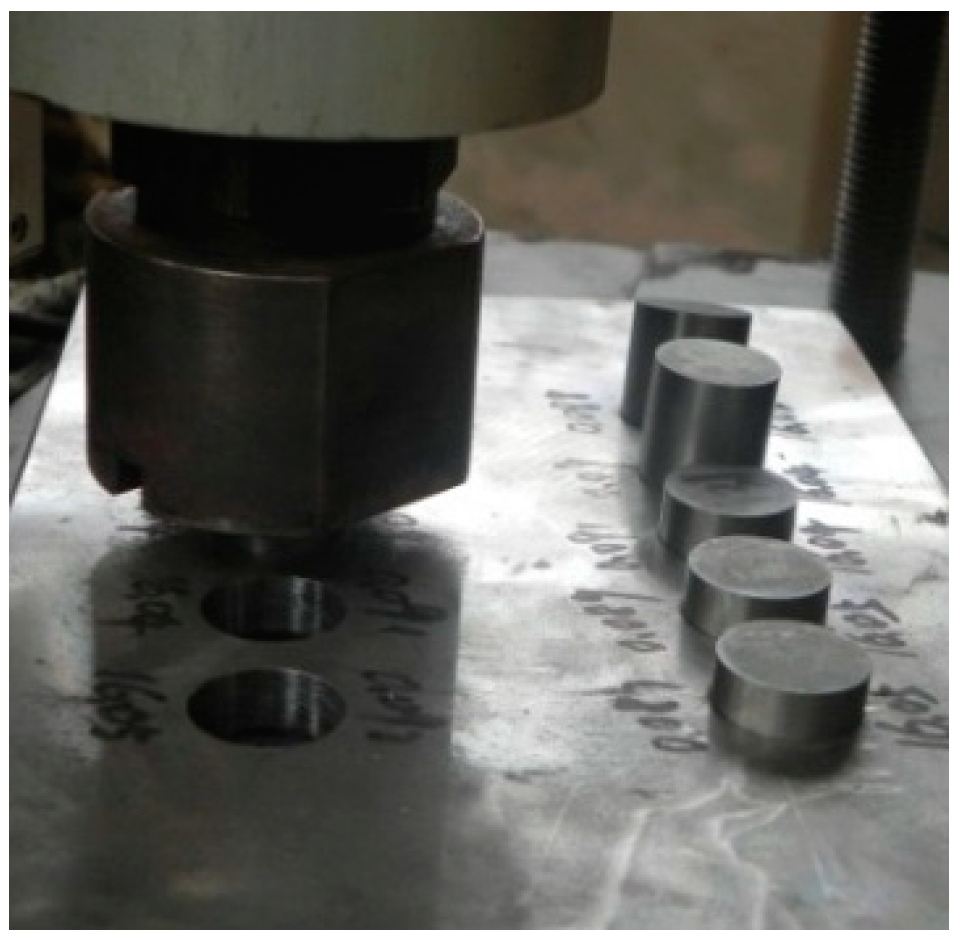
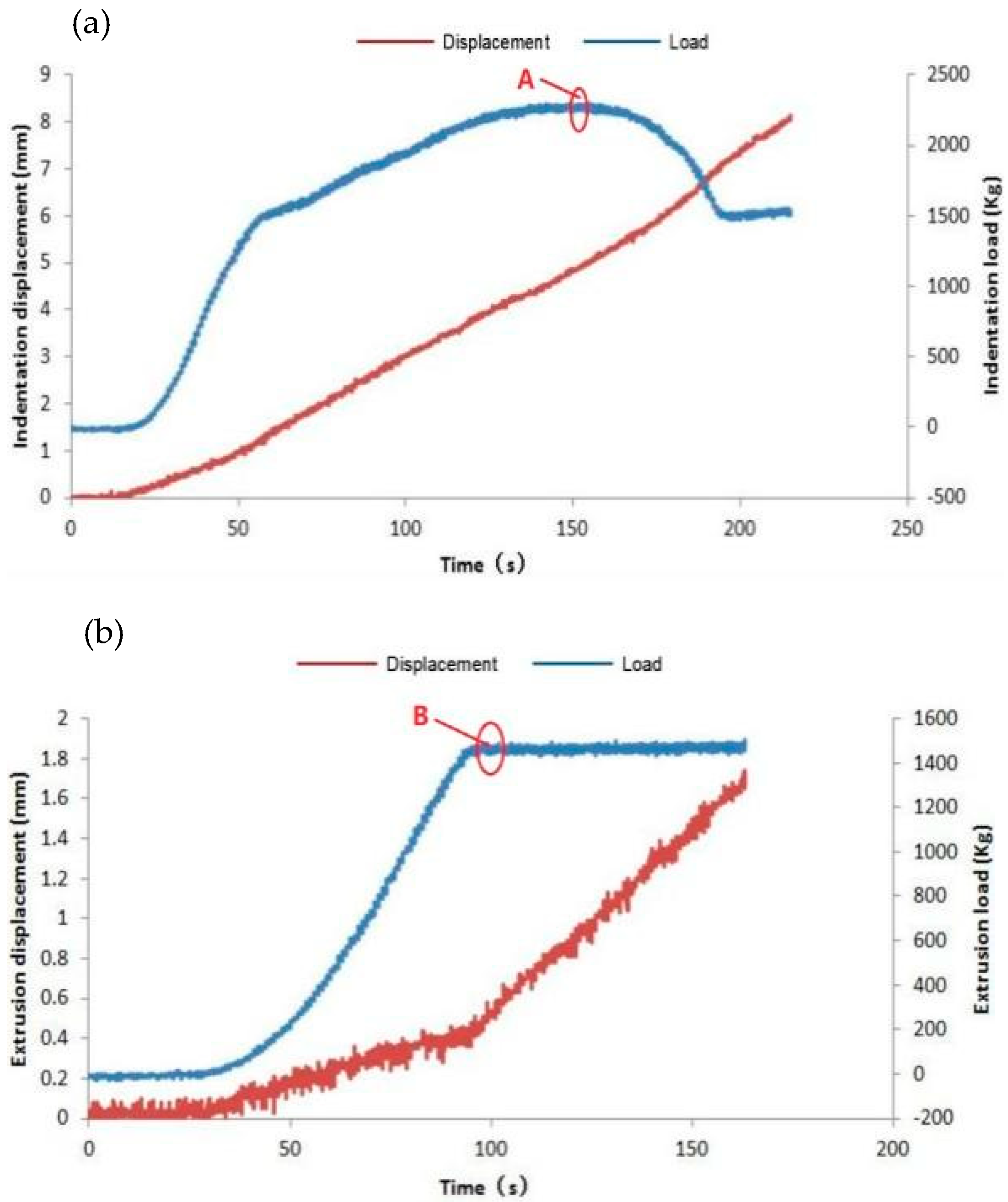
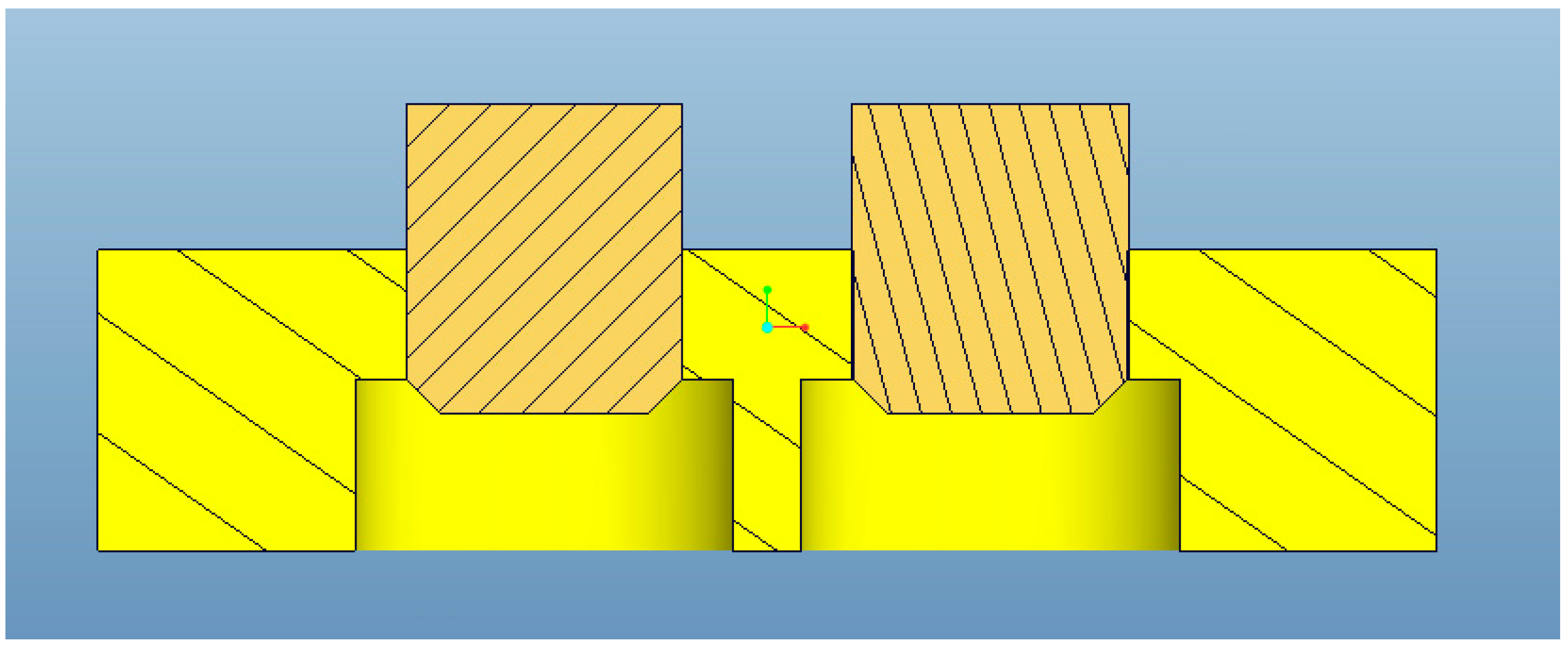
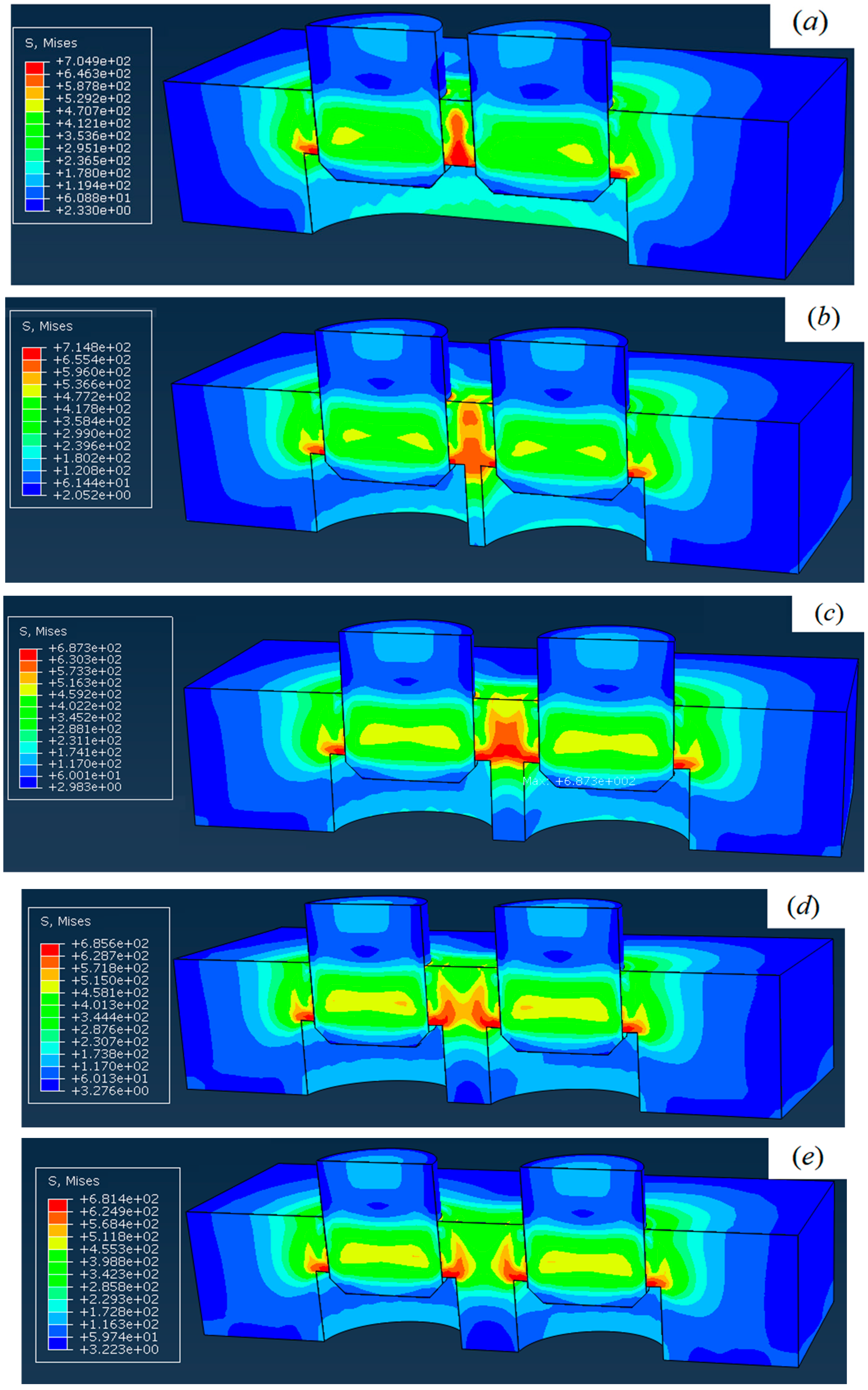
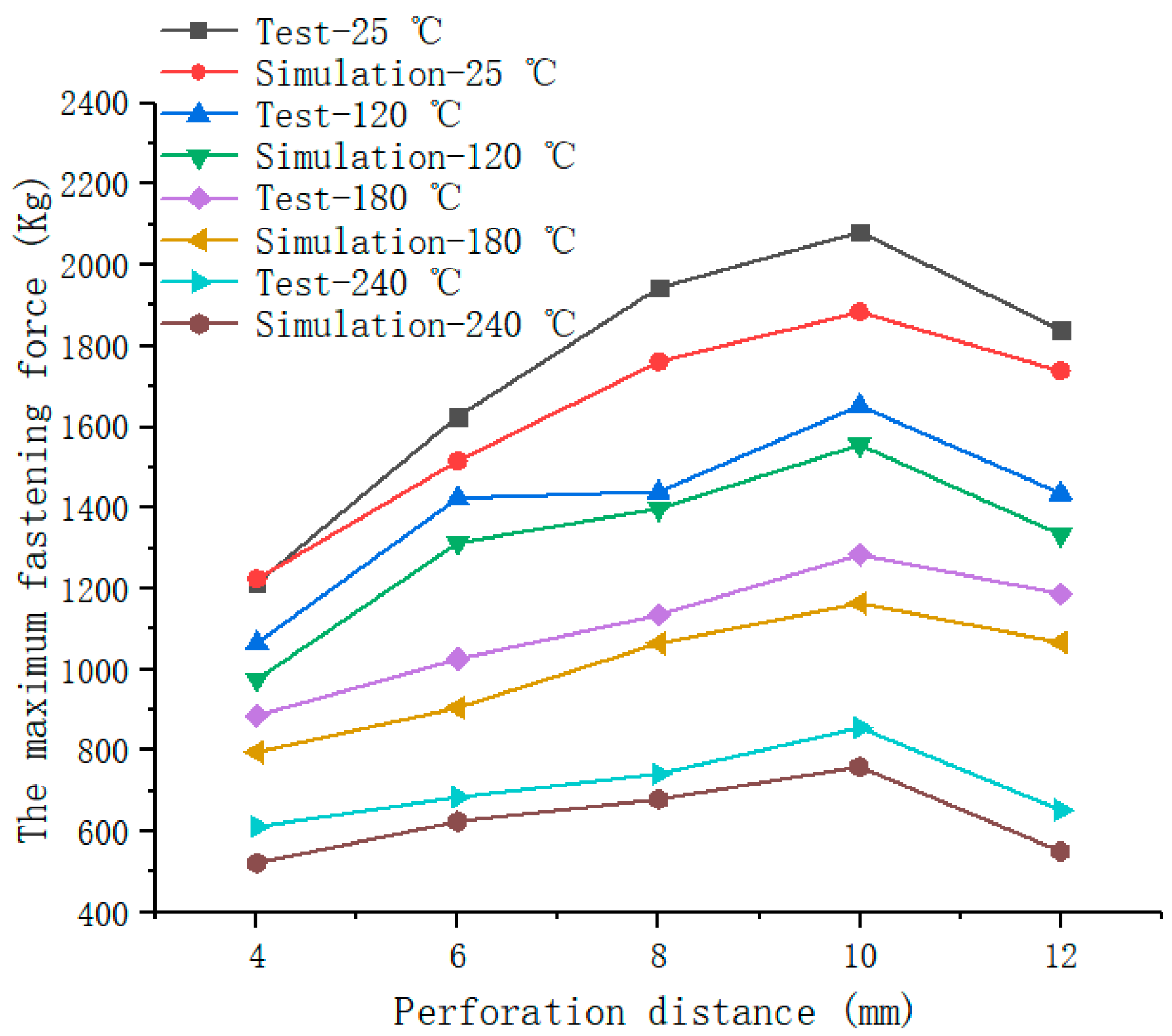
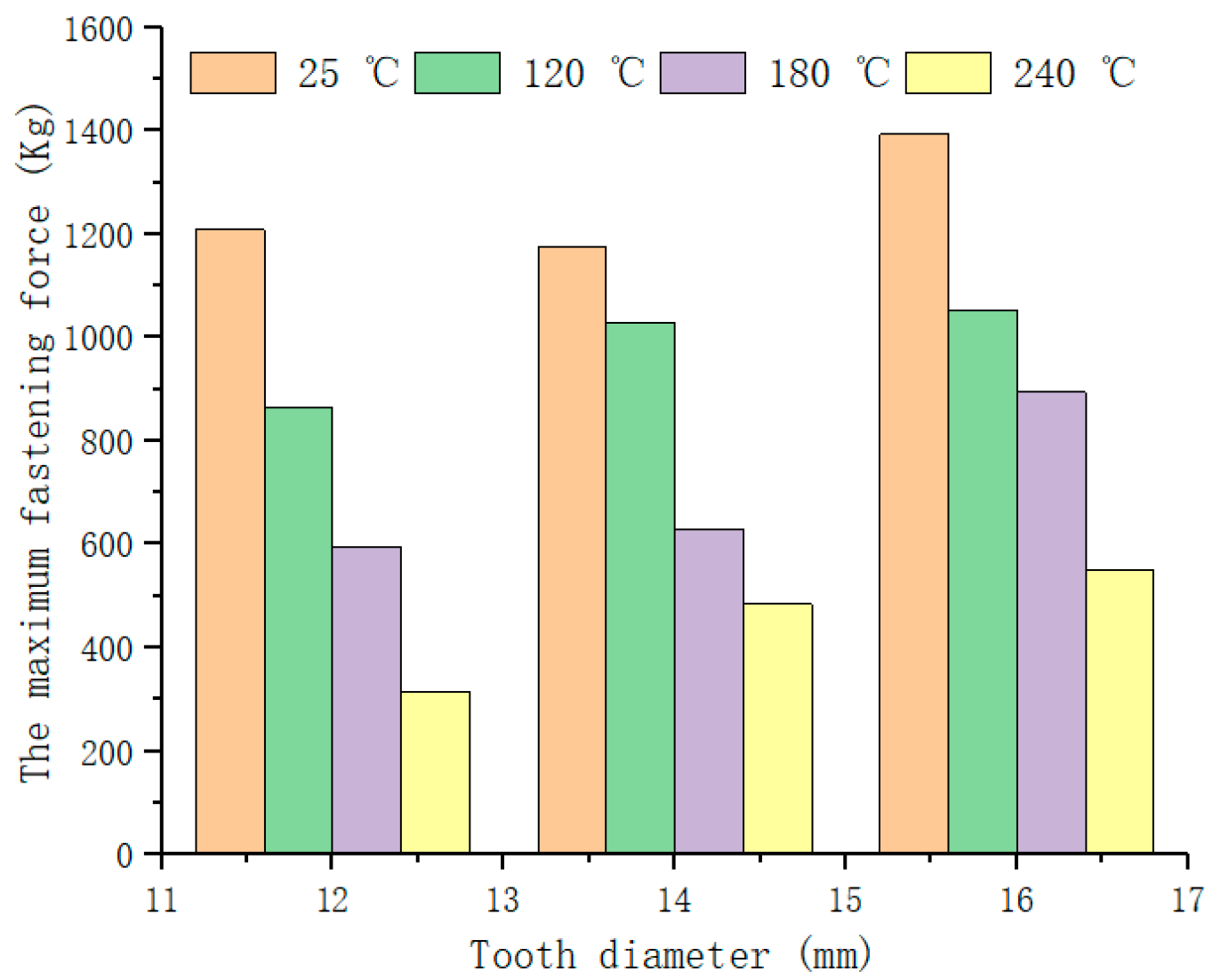
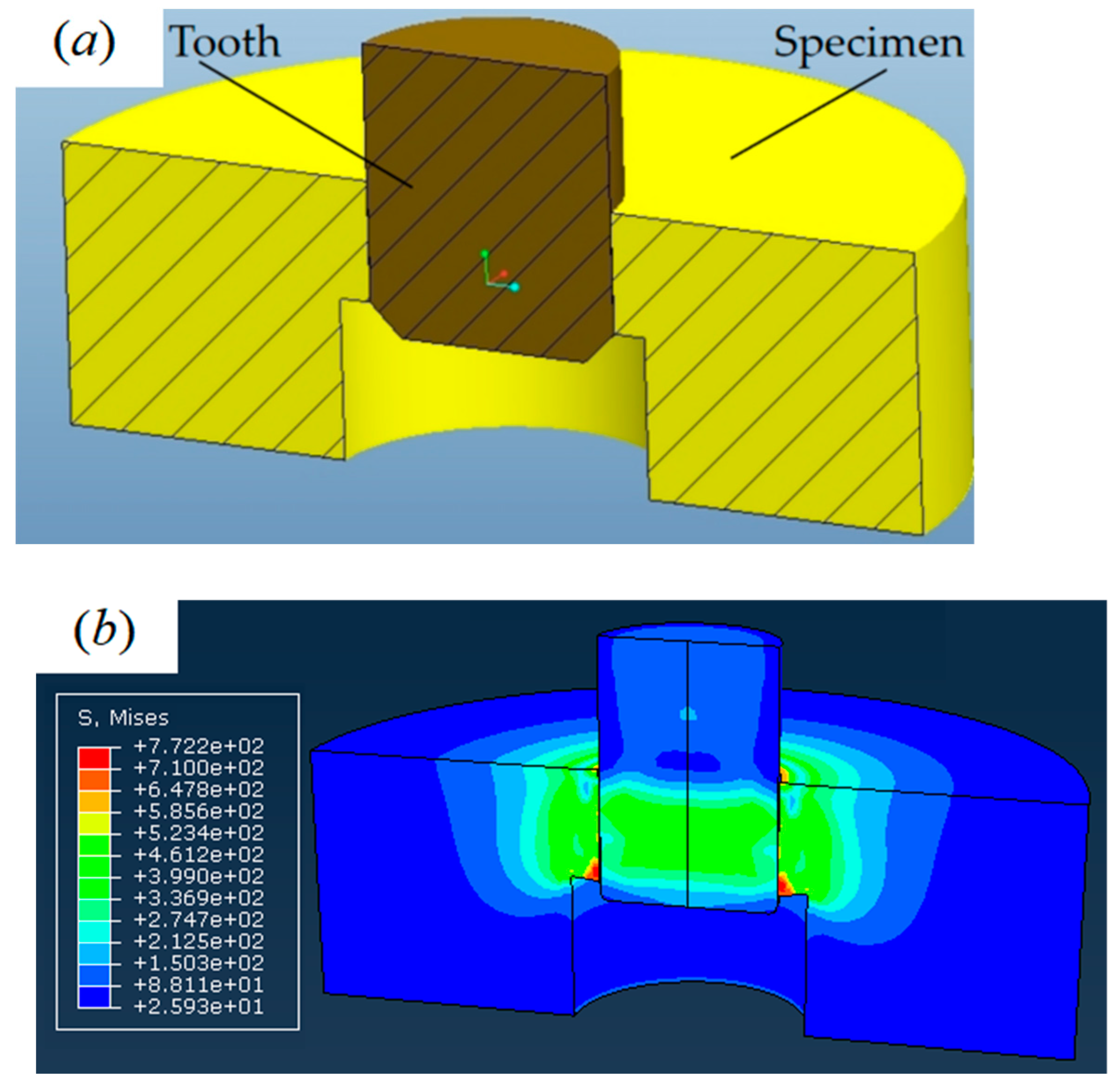
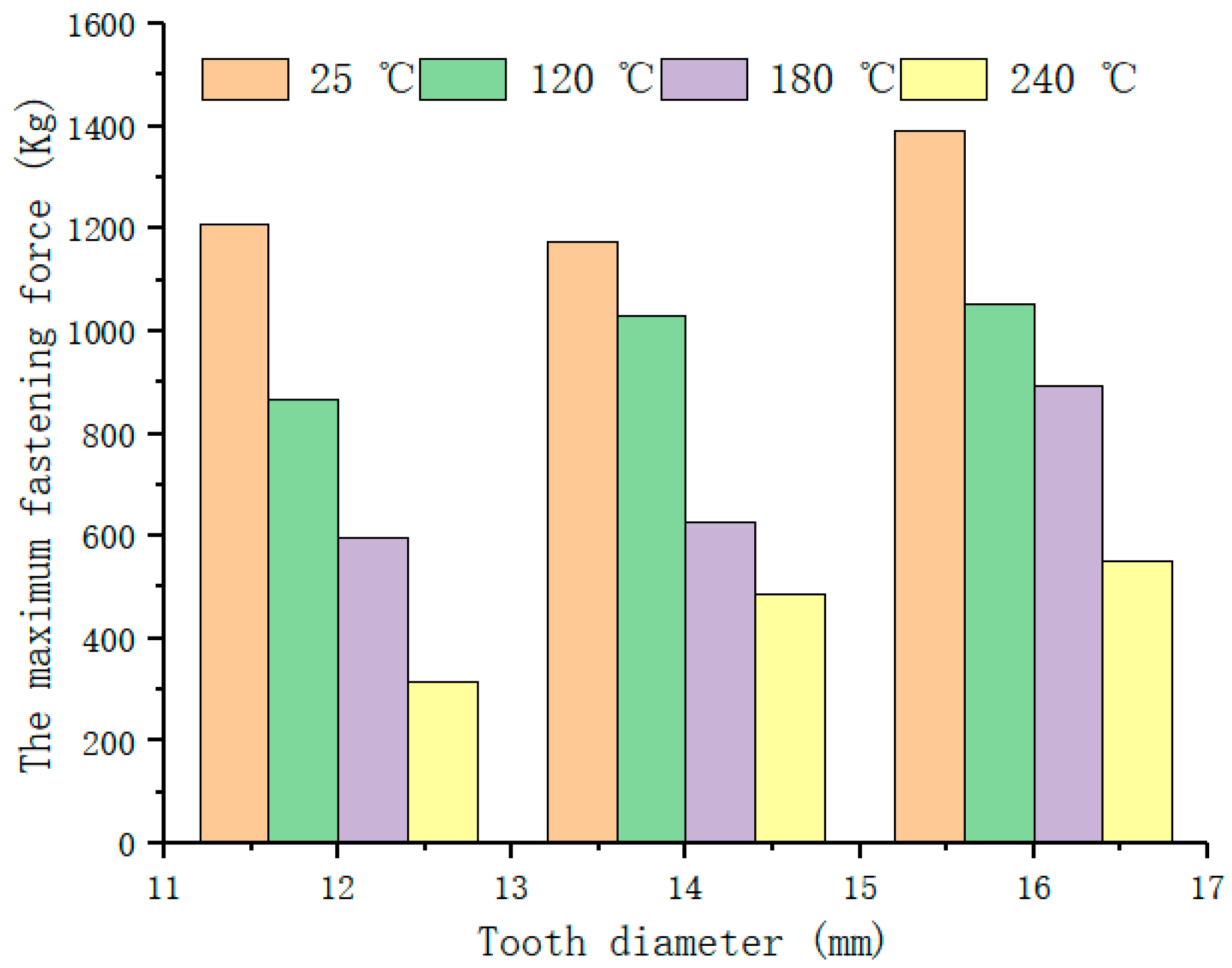

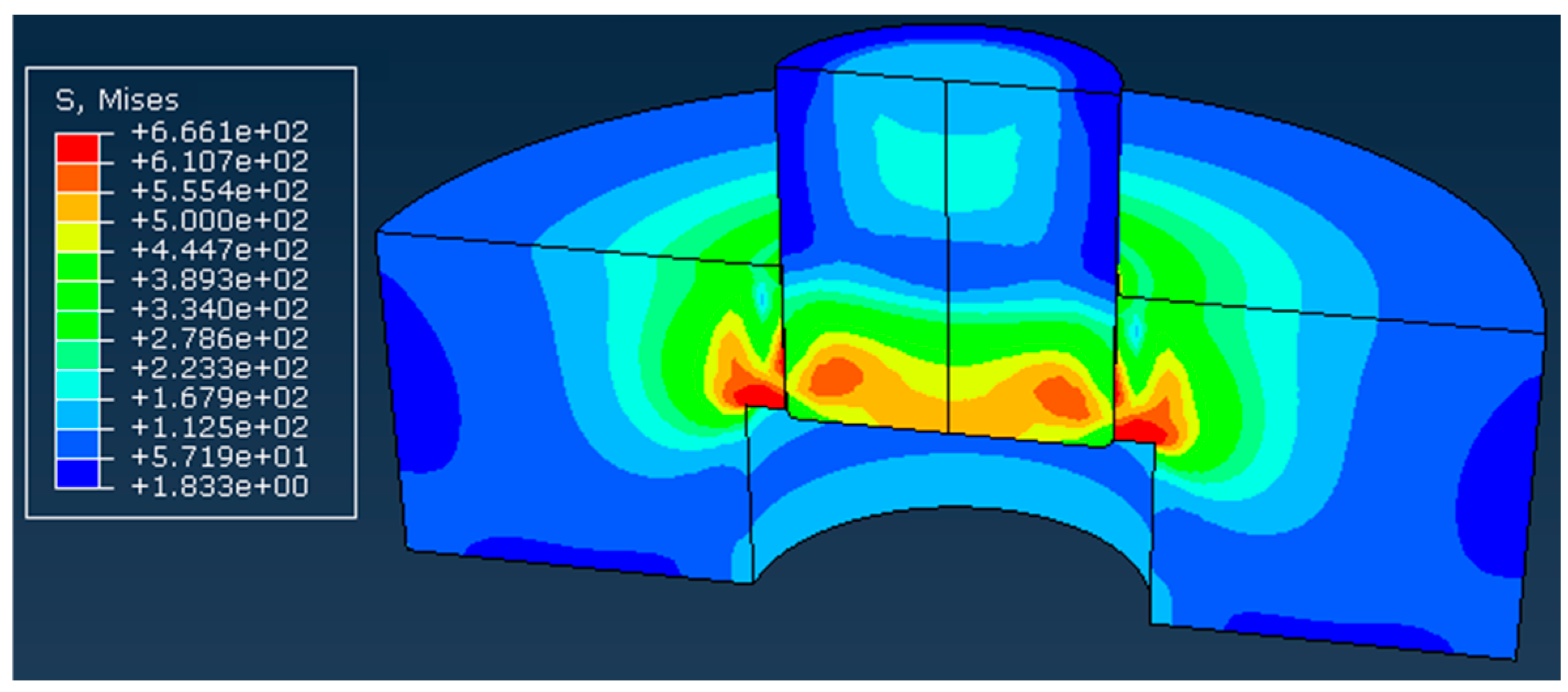
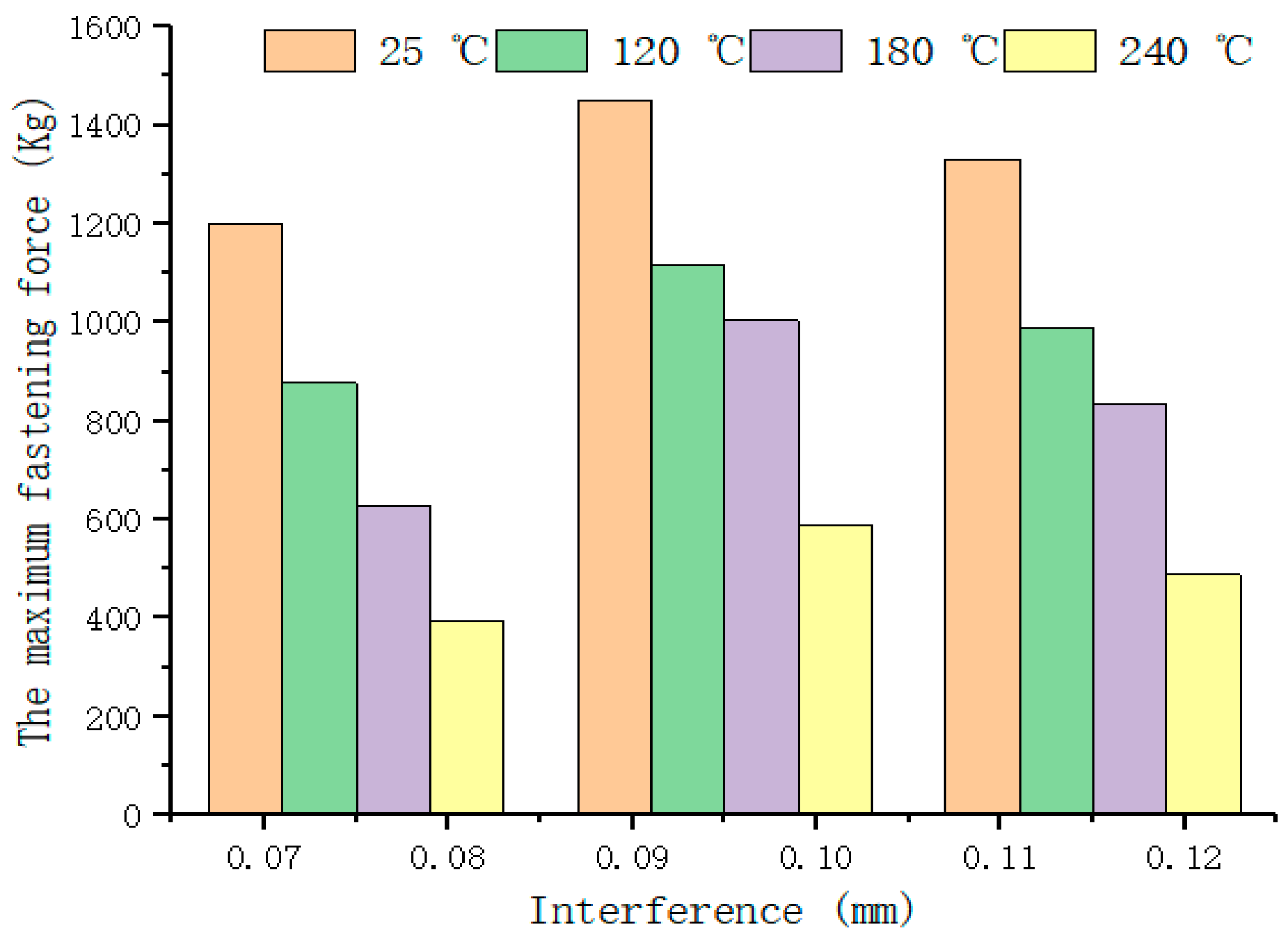
| Elastic Modulus (GPa) | Poisson’s Ratio | Expansion Coefficient (K−1) | Yield Limit (MPa) | Strength Limit (MPa) | |
|---|---|---|---|---|---|
| 20CrMo | 210 | 0.28 | 13.2 × 10−6 | 626 | 885 |
| YG16C | 640 | 0.23 | 5.3 × 10−6 | 1120 | 5460 |
Disclaimer/Publisher’s Note: The statements, opinions and data contained in all publications are solely those of the individual author(s) and contributor(s) and not of MDPI and/or the editor(s). MDPI and/or the editor(s) disclaim responsibility for any injury to people or property resulting from any ideas, methods, instructions or products referred to in the content. |
© 2025 by the authors. Licensee MDPI, Basel, Switzerland. This article is an open access article distributed under the terms and conditions of the Creative Commons Attribution (CC BY) license (https://creativecommons.org/licenses/by/4.0/).
Share and Cite
Yang, Y.; Song, D.; Chen, L.; Yang, Y.; Ren, H.; Qiu, S.; Huang, Z. Research on the Fixation Strength of High-Temperature Geothermal Drilling Cone Bit Teeth. Energies 2025, 18, 2469. https://doi.org/10.3390/en18102469
Yang Y, Song D, Chen L, Yang Y, Ren H, Qiu S, Huang Z. Research on the Fixation Strength of High-Temperature Geothermal Drilling Cone Bit Teeth. Energies. 2025; 18(10):2469. https://doi.org/10.3390/en18102469
Chicago/Turabian StyleYang, Yan, Dongdong Song, Lian Chen, Yingxin Yang, Haitao Ren, Shunzuo Qiu, and Zequan Huang. 2025. "Research on the Fixation Strength of High-Temperature Geothermal Drilling Cone Bit Teeth" Energies 18, no. 10: 2469. https://doi.org/10.3390/en18102469
APA StyleYang, Y., Song, D., Chen, L., Yang, Y., Ren, H., Qiu, S., & Huang, Z. (2025). Research on the Fixation Strength of High-Temperature Geothermal Drilling Cone Bit Teeth. Energies, 18(10), 2469. https://doi.org/10.3390/en18102469





